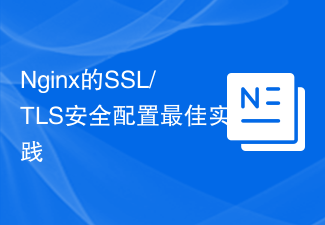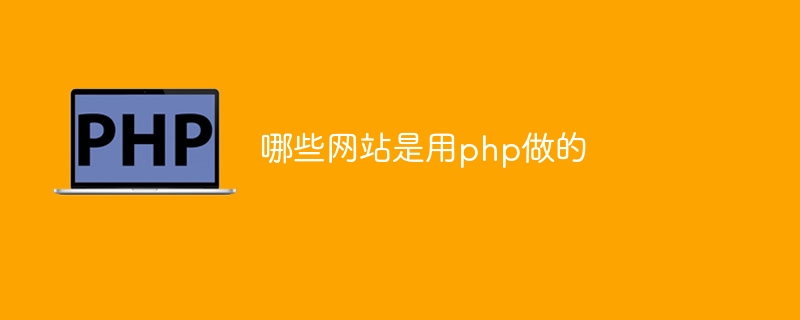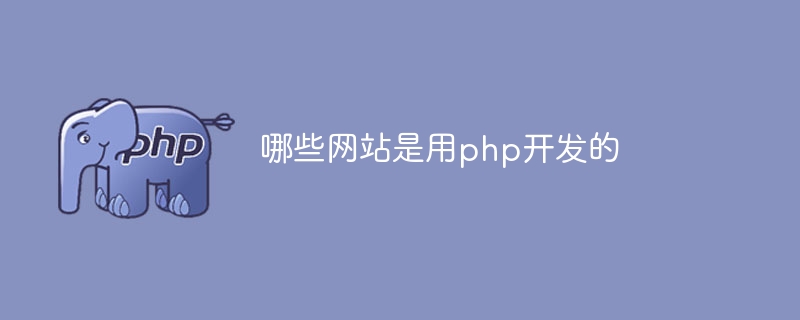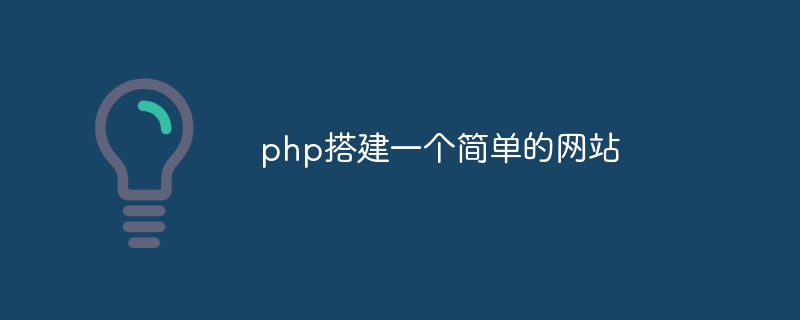 Backend Development
Backend Development PHP Tutorial
PHP Tutorial How to protect sensitive files of PHP website through security configuration files?
How to protect sensitive files of PHP website through security configuration files?
How to protect sensitive files of PHP website through security configuration files?
When developing and deploying PHP websites, protecting sensitive files is a very important task. By properly configuring your server and using security profiles, you can effectively prevent unauthorized access to sensitive files. This article will introduce how to protect sensitive files of PHP website through security configuration files.
- Configuring the Web Server
First, we need to ensure that the Web server is configured correctly to prevent sensitive files from being accessed directly. Commonly used web servers include Apache and Nginx. The configuration methods are introduced below.
-
Apache
In the Apache configuration file (usually httpd.conf), find the following line:<Directory /var/www/html> Options Indexes FollowSymLinks AllowOverride None Require all granted </Directory>
Replace
AllowOverride NoneChange toAllowOverride Alland then restart the Apache server. -
Nginx
In the Nginx configuration file (usually nginx.conf), find the following line:location / { try_files $uri $uri/ =404; }Place
try_files $uri $uri / =404;Change totry_files $uri $uri/ /index.php?$query_string;, and then restart the Nginx server.
- Create a security configuration file
Create a file named .htaccess in the root directory of the website (if using Apache) Or nginx.conf (if using Nginx) file, used to set access rules and protect sensitive files.
-
Apache
The sample code is as follows:Options -Indexes <Files ~ ".ini$"> Order allow,deny Deny from all </Files> <Files ~ ".log$"> Order allow,deny Deny from all </Files> <Files ~ "(^|.)ht(access|passwd|groups|config)$"> Order allow,deny Deny from all </Files>
The function of the above code is to prohibit listing directory files and accessing files ending with
.iniFiles, files ending with.logare prohibited, and access to.htaccess,.htpasswd,.htgroups,.htconfig is prohibited.and other files. -
Nginx
The sample code is as follows:location ~ /. { deny all; } location ~* .(ini|log)$ { deny all; }The function of the above code is to prohibit access to files starting with a dot and prohibit access to
.iniand files ending with.log.
- Other security measures
In addition to the above configuration files, we can also take other security measures to further protect the security of sensitive files.
- Move sensitive files out of the Web root directory
You can move sensitive files out of the Web root directory, so that even if the Web server is compromised, the sensitive files will not be directly accessed. - Turn on PHP's safe mode
By settingsafe_mode = Onin thephp.iniconfiguration file, you can limit the scope of PHP scripts to access files to increase safety. - Check file permissions
Ensure that the permissions of sensitive files are set correctly. Use the commandchmodto set appropriate permissions. Generally, set permissions for sensitive files to 600 or higher.
Summary
By correctly configuring the web server and using security configuration files, you can effectively protect the sensitive files of your PHP website. At the same time, server and application patches should be regularly updated, as well as the password security of the website should be strengthened. Combining multiple security measures, it can provide more reliable protection of sensitive files.
References:
- Apache official documentation: https://httpd.apache.org/docs/
- Nginx official documentation: https://nginx. org/en/docs/
The above is the detailed content of How to protect sensitive files of PHP website through security configuration files?. For more information, please follow other related articles on the PHP Chinese website!
 Gin框架的安全性能和安全配置详解Jun 22, 2023 pm 06:51 PM
Gin框架的安全性能和安全配置详解Jun 22, 2023 pm 06:51 PMGin框架是一个轻量级的Web开发框架,它基于Go语言,并提供了强大的路由功能、中间件支持以及可扩展性等优秀的特性。然而,对于任何Web应用程序来说,安全性都是至关重要的因素。在本文中,我们将讨论Gin框架的安全性能和安全配置,以帮助用户确保其Web应用程序的安全性。一、Gin框架的安全性能 1.1XSS攻击预防 跨站点脚本(XSS)攻击是最常见的We
 Nginx的SSL/TLS安全配置最佳实践Jun 10, 2023 am 11:36 AM
Nginx的SSL/TLS安全配置最佳实践Jun 10, 2023 am 11:36 AMNginx是一款广泛使用的HTTP服务器和反向代理服务器,其通过SSL/TLS协议保障网络通信的安全性。在这篇文章中,我们将探讨Nginx的SSL/TLS安全配置最佳实践,以帮助您更好地保障服务器的安全性。一、使用最新版本的Nginx和OpenSSL最新版本的Nginx和OpenSSL包含了最新的安全修复和更新。因此,保证使用最新版本的Nginx和OpenS
 优化网站SEO:伪静态隐藏php后缀实践Mar 07, 2024 pm 12:27 PM
优化网站SEO:伪静态隐藏php后缀实践Mar 07, 2024 pm 12:27 PM众所周知,优化网站的SEO是网站运营中非常重要的一环。而众多网站使用的动态网页系统(如PHP)默认的URL带有拓展名(.php、.html等)会影响网站的SEO效果。为了提升网站的优化效果,一种常见的做法是将动态URL改为伪静态URL以隐藏拓展名,提高网站的用户体验和搜索引擎排名。本文将以“伪静态隐藏php后缀”为主题,介绍如何在PHP网站中实现这种优化,并
 Java中的安全配置管理和访问控制策略Aug 07, 2023 am 11:01 AM
Java中的安全配置管理和访问控制策略Aug 07, 2023 am 11:01 AMJava中的安全配置管理和访问控制策略在Java应用程序开发中,安全性是一个至关重要的方面。为了保护应用程序免受潜在的攻击,我们需要实施一系列的安全配置管理和访问控制策略。本文将探讨Java中的安全配置管理和访问控制策略,并提供一些相关的代码示例。安全配置管理安全配置管理是指在Java应用程序中设置和管理各种安全机制和策略,以确保应用程序的安全性。Java提
 哪些网站是用php做的Aug 11, 2023 am 10:55 AM
哪些网站是用php做的Aug 11, 2023 am 10:55 AM用php做的网站有:1、Facebook,全球最大的社交媒体平台之一;2、Wikipedia,一个全球用户共同编辑的在线百科全书;3、WordPress,一个流行的开源博客和内容管理系统;4、Slack,一款广泛使用的团队协作工具;5、Magento,一款功能强大的开源电子商务平台;6、Etsy,一个面向手工艺品和独立设计师的在线市场。
 帝国cms模板开发方法是什么Apr 17, 2024 am 12:09 AM
帝国cms模板开发方法是什么Apr 17, 2024 am 12:09 AM帝国cms模板开发方法包括:1. 了解模板结构;2. 修改模板代码;3. 使用标签和变量;4. 创建自定义函数;5. 使用CSS和JS;6. 使用模板模块;7. 调试和测试。
 哪些网站是用php开发的Aug 11, 2023 am 11:03 AM
哪些网站是用php开发的Aug 11, 2023 am 11:03 AM用php开发的网站有:1、Facebook,全球最大的社交媒体平台之一;2、Wikipedia,全球知名的在线百科全书;3、WordPress,广泛使用的开源博客和内容管理系统;4、Twitter,流行的社交媒体平台;5、Yahoo,全球知名的门户网站;6、Flickr,在线图片托管和分享平台;7、LinkedIn,专业社交媒体平台。
 php搭建一个简单的网站Mar 22, 2024 pm 03:04 PM
php搭建一个简单的网站Mar 22, 2024 pm 03:04 PM构建一个 PHP 网站涉及以下步骤: 1. 准备环境,安装 PHP 开发环境和创建网站根目录。 2. 创建基本文件结构,包括首页 index.php 和其他所需文件。 3. 编写首页内容,使用 HTML 和 PHP 构建页面结构和动态生成内容。 4. 添加其他页面,创建其他 PHP 文件处理页面内容。 5. 连接数据库(可选),使用 PHP 连接数据库并操作数据。 6. 设计样式和交互效果,使用 CSS 和 JavaScript 增强网站美观和交互性。 7. 部署网站,将网站文件上传到服务器或


Hot AI Tools

Undresser.AI Undress
AI-powered app for creating realistic nude photos

AI Clothes Remover
Online AI tool for removing clothes from photos.

Undress AI Tool
Undress images for free

Clothoff.io
AI clothes remover

AI Hentai Generator
Generate AI Hentai for free.

Hot Article

Hot Tools

Safe Exam Browser
Safe Exam Browser is a secure browser environment for taking online exams securely. This software turns any computer into a secure workstation. It controls access to any utility and prevents students from using unauthorized resources.

PhpStorm Mac version
The latest (2018.2.1) professional PHP integrated development tool

MinGW - Minimalist GNU for Windows
This project is in the process of being migrated to osdn.net/projects/mingw, you can continue to follow us there. MinGW: A native Windows port of the GNU Compiler Collection (GCC), freely distributable import libraries and header files for building native Windows applications; includes extensions to the MSVC runtime to support C99 functionality. All MinGW software can run on 64-bit Windows platforms.

WebStorm Mac version
Useful JavaScript development tools

mPDF
mPDF is a PHP library that can generate PDF files from UTF-8 encoded HTML. The original author, Ian Back, wrote mPDF to output PDF files "on the fly" from his website and handle different languages. It is slower than original scripts like HTML2FPDF and produces larger files when using Unicode fonts, but supports CSS styles etc. and has a lot of enhancements. Supports almost all languages, including RTL (Arabic and Hebrew) and CJK (Chinese, Japanese and Korean). Supports nested block-level elements (such as P, DIV),





